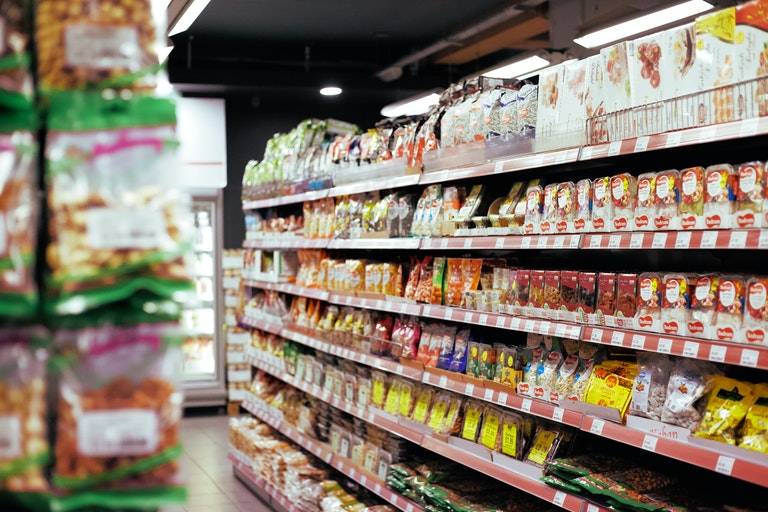Grocery shopping has undergone major changes recently. Since the start of the COVID-19 pandemic, people have adjusted their shopping patterns, both in terms of frequency and in terms of the items that they choose. Panic shopping led to strange shortages, while disrupted supply chains made it harder to refill shelves. It’s been hard on people at every point along the chain, from farmers and factory workers to grocery store clerks and shoppers – but the good news is that navigating product availability doesn’t have to be so complicated.
If grocery stores can leverage data streams drawn directly from inventory levels and link this information to a central platform, shoppers can plan their trips more effectively, minimizing potential viral exposure. This data can also help distributors replot distribution chains to appropriately meet changing demand. With grocery shopping trends unlikely to settle back into their old patterns any time soon, brands need to take steps to adjust.
Online Shopping And Empty Shelves
Outside of panic shopping, which generally involves buying up large amounts of beans, rice, toilet paper, and bottled water, one of the most significant recent changes in grocery shopping is the growth of online grocery purchases. Relative to other sectors, groceries have always been underrepresented in ecommerce. People like to pick out their own produce, browse the shelves for deals, and wait for inspiration as they stroll the aisles, but not anymore.
Since the start of the current pandemic, however, more people have been purchasing groceries online, either for delivery via platforms like Shipt and Jet, or through third-party gig economy platforms like Instacart. This allows them to avoid stores, with their potential for infection and generally chaotic environment, but it’s also much harder to manage out of stock products when buyers aren’t in stores picking out their own items. For each out of stock item, designated Instacart shoppers might text the recipient to problem solve based on available goods. Direct shipping platforms are even worse off. If an out of stock item is accidentally ordered because of a delay to system updates, they simply drop those products from the invoice.
Finding What Buyers Need
Difficulty stocking the shelves is just one of the current issues facing grocery systems today. One of the major shifts is how shoppers navigate stores. In one study, researchers found that shoppers are unlikely to return to a store if they have what they perceive as an unsafe experience there. They also found what they termed to be a significant drop in “cross-shopping,” which means that shoppers visit a smaller number of stores per grocery trip. This is appropriate behavior given the current emphasis on limited shopping trips and social distancing, but it represents a major problem for shoppers who prefer or require specialty products. Is it possible for these shoppers to get what they need without putting themselves at risk?
One tool that could help solve the cross-shopping problem for shoppers and help stores attract those specialty shoppers is Where to Buy, a data-driven store locator that shows what stores have a given item in stock. Such a tool can help shoppers evaluate. Such a tool can help shoppers evaluate if they can get a specific product on their list, rather than trekking to a store only to discover it doesn’t have the items they’re looking for.
Perimeter Problems
From a data perspective, packaged goods are fairly easy to track. Software can quickly determine what is and isn’t available based on checkout station data. Those main aisle products aren’t the only thing in stores, though. Perimeter inventory – produce and bakery items, as well as meat and other perishables – is much harder to track, especially as SKUs increase. The issue of freshness also complicates this issue. Properly packaging these items for ecommerce-based grocery shopping adds a third challenge, while interrupted supply chains have compounded the crisis. So how can grocery systems keep track?
Ecommerce may hold the key to managing perimeter elements by subtracting the physical presence of customers. By placing full control of perishable products in the hands of the distributors, the system becomes more stable. This fact, along with COVID-related shopper preferences, point to the future of grocery stores. In an industry that was historically slow to move into ecommerce, steady improvements in accuracy as well as in packaging and shipping sustainability have helped support the shift. The transition has been further bolstered by increased demand for ecommerce grocery services during the pandemic.
A Rich Data Lode
Ultimately, grocery stores are data troves, the equivalent of a coal vein ready to be mined. As such, if stores can reframe COVID as an opportunity to scale up their use of retail data, this moment could be a huge opportunity. Shoppers are already reimagining the grocery store based on their new understandings of risk and social interaction. By listening closely to shopper demands and taking advantage of new technology, then, stores can adapt to provide higher quality service based on changing preferences and a transformed world.







